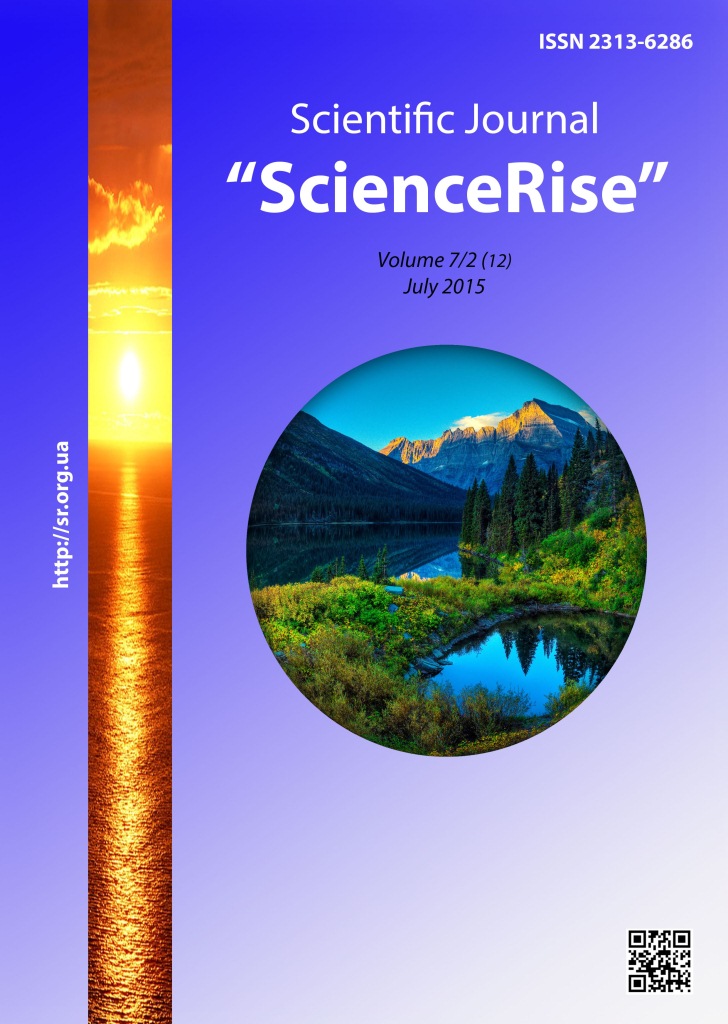Intensification of heat-mass exchange processes in the immersed burning apparatus by contacting phases oscillation
DOI:
https://doi.org/10.15587/2313-8416.2015.46987Keywords:
immersed burning apparatus, heat-mass exchange processes, oscillation, bubblingAbstract
The problem of oscillation generation in contacted gas – liquid phases as the means of intensification of heat-mass exchange processes at bubbling of the gas – liquid system in the immersed burning apparatus (IBA) was studied. Kinematic and force characteristics in the wave field were determined. It was proposed to place the resonant bubbling devices in the outlet zone of burning products from IBA and at their entry to liquid. The experiments on laboratory-scale plants and technological plants show great potential of proposed apparatus
References
Kardashov, G. A. (1973). Heat-exchange acoustic process and apparatuses. Moscow, USSR: Mechanical Engineering, 223.
Sokolov, V. N., Domansky, I.V. (1973). Gas-liquid reactors. Leningrad, USSR: Mechanical Engineering, 216.
(2008). Universal heater of technological liquids UHTL-101.01. ТУ У 29.7-02070758-001:2008. Technical description. Dnepropetrovsk, Ukraine.
Isakovich, M. A. (1979). The general acoustics. Moscow, USSR: Science, 389.
(1963). Vocabulaire electrotechnique international. Gr.35: Electromechanical devices and their application. Moscow, USSR: Physmathgis, 69.
(1979). Ultrasound. Concise Encyclopaedia. Moscow, USSR: Soviet Encyclopaedia, 400.
Pein, G. (1979). Physics of oscillation and waves. Moscow, USSR: Mir, 389.
Bergman, L. (1975). Ultrasound and its application in science and technique. Moscow, USSR: Foreign Literature, 659.
Minnaert, M. (1933). On musical air bubbles and the sounds of minning water. Phil. Mag. 16 (7), 235.
Smith, F. D. (1935). On the destructive mechanical effects of the Gas bubbles liberated by the passage of intense sound through a liquid. Phil. Mag. 19 (7), 1137.
Downloads
Published
Issue
Section
License
Copyright (c) 2015 Валерий Евгеньевич Никольский

This work is licensed under a Creative Commons Attribution 4.0 International License.
Our journal abides by the Creative Commons CC BY copyright rights and permissions for open access journals.
Authors, who are published in this journal, agree to the following conditions:
1. The authors reserve the right to authorship of the work and pass the first publication right of this work to the journal under the terms of a Creative Commons CC BY, which allows others to freely distribute the published research with the obligatory reference to the authors of the original work and the first publication of the work in this journal.
2. The authors have the right to conclude separate supplement agreements that relate to non-exclusive work distribution in the form in which it has been published by the journal (for example, to upload the work to the online storage of the journal or publish it as part of a monograph), provided that the reference to the first publication of the work in this journal is included.

